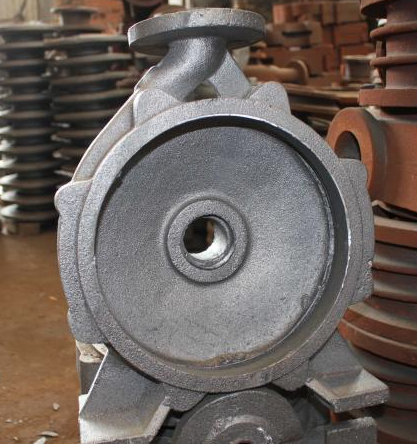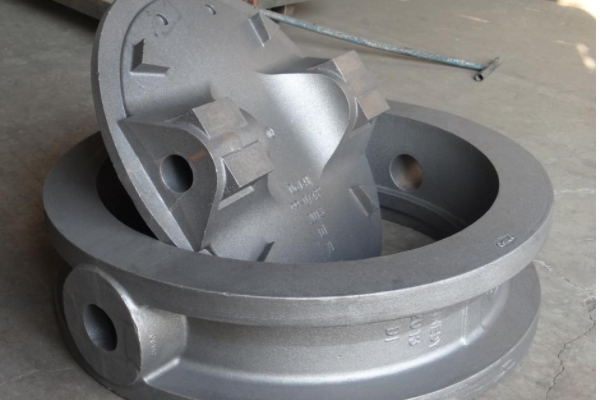How to make pearlite ductile iron?

Pearlitic ductile iron is ductile iron in which pearlite accounts for more than 80% of the matrix structure. The three grades of ductile iron, QT600-2, QT700-2, and QT800-2 in China's national standards, belong to this type. This type of ductile cast iron is usually obtained by normalizing, and it can also be obtained by adding alloying elements and cooperating with technological measures. It is mainly used to manufacture parts that require high strength, certain fatigue strength and wear resistance, such as diesel engine crankshafts, connecting rods, etc.
1. Chemical composition:
(1) Carbon and silicon
In order to ensure a sufficient amount of pearlite and a proper amount of ferrite structure to ensure strength and toughness, it is very important to select an appropriate carbon equivalent. Generally, the carbon equivalent is 4.4% to 4.7%, and the carbon content is 3.7% to 4.0%. Silicon 2.0%~2.5%; the silicon content of as-cast pearlitic ductile iron should be taken to the lower limit.
(2) Manganese, phosphorus, sulfur
Manganese reduces the eutectoid transformation temperature and refines pearlite, and improves the strength, hardness and wear resistance of ductile iron. Excessive manganese content (>1.8%) will produce cementite, which will reduce elongation and impact toughness. The segregation tendency of manganese is relatively high. If the amount of manganese is too high, Mn3c will be formed, and network carbides will be precipitated along the grain boundaries, especially for thick and large castings. For normalized pearlitic ductile iron, the manganese content of small and medium castings is 0.6% to 0.9%; for large castings, less than 0.5%; the as-cast pearlitic ductile iron should also contain less than 0.5% manganese. While relying on adding copper to stabilize pearlite, the phosphorus and sulfur content of general ductile iron should be as low as possible.
(3) Molybdenum and copper
Molybdenum increases the stability of undercooled austenite, shifts the s curve to the right, improves the hardenability of ductile iron, and improves the uniformity of the structure of thick and large section castings. Adding 0.2% to 0.3% of molybdenum can obtain fine pearlite and sorbite structure, which can refine graphite and eutectic clusters to make the fracture dense, and significantly improve the strength, hardness and wear resistance. Copper has the effect of reducing the eutectoid transformation temperature and stabilizing austenite. During the eutectoid transformation, copper hinders graphitization and promotes the transformation of austenite into pearlite. Therefore, copper can increase the amount of as-cast pearlite. The amount of copper added is generally about 0.5%. The addition of copper and molybdenum to large-section high-strength ductile iron parts can improve the uniformity of the structure and increase the strength.
2. Heat treatment
As-cast pearlite ductile iron generally uses copper or molybdenum to promote the formation and stability of pearlite. Small castings can also obtain pearlite structure by controlling the silicomanganese content and cooling rate. Except for as-cast ductile iron obtained by alloying, it is generally obtained by heat treatment. Through heat treatment, the primary cementite in the structure is eliminated, the coarse pearlite and ferrite are transformed into fine pearlite, the structure is uniform and the internal stress is eliminated.
(1) Ordinary normalizing
The purpose is to obtain pearlite or sorbite ductile iron. When the cast structure pearlite is less than 80% to 90%, it is implemented, and pearlite can be obtained as the main matrix structure, but there is a small amount of bull's eye ferrite. When the as-cast structure has no cementite, ternary or composite phosphorus eutectic, the normalizing process without cementite can be used. When the as-cast structure cementite is ≥3%, and there is ternary or composite phosphorus eutectic, the normalizing process with cementite can be used.
(2) Partial austenitizing normalizing
Purpose is similar to ordinary normalizing, but the toughness can be improved by controlling the amount of broken ferrite and good strength can be obtained. For example, for ductile iron with slightly higher phosphorus content (≤0.13%), a mixed matrix of pearlite and crushed ferrite can be obtained. The difference with ordinary normalizing is that it is not normalizing after sufficient heat preservation above the eutectoid transformation temperature to completely austenitize, but in the eutectoid transformation temperature range, that is, between the upper and lower critical temperatures, only part of the austenite occurs. After normalizing, the fractured ferrite is formed along the grain boundary, the amount of which depends on the partial austenitizing temperature and time. The closer the temperature is to the upper critical temperature of eutectoid transformation, the less ferrite is broken and finer, the strength increases and the toughness decreases. When the as-cast structure cementite>3%, there is ternary or composite phosphorus eutectic, it should be decomposed at high temperature first, and then the furnace is cooled to the eutectoid transformation temperature range and partially austenitized and then normalized. Note that part of the austenitizing temperature is related to the silicon content, and here refers to the applicable temperature when the Si is 2%-3%.


